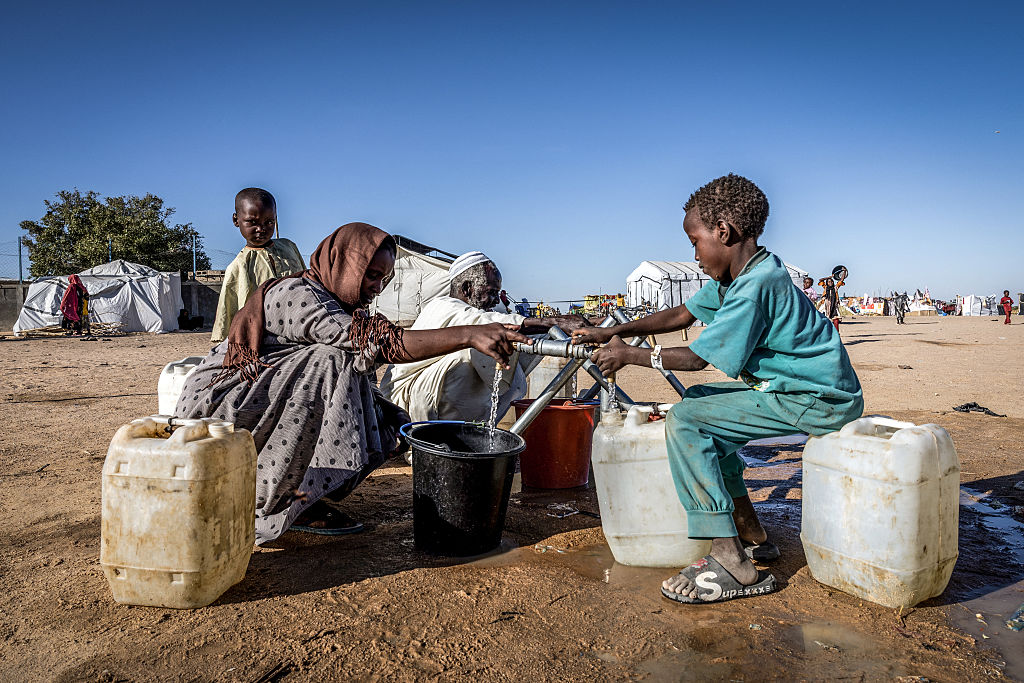After 18 months of laying siege to el-Fasher, the paramilitary Rapid Support Forces (RSF) finally defeated Sudanese government troops there, taking control of the Army’s last enclave in Darfur and causing death, famine and displacement.
El-Fasher, once home to more than a million people, fell to the RSF on October 26, 2025. The International Organization for Migration estimated that more than 70,000 people have left the city since the RSF takeover. Yet a displacement camp in Tawila about 70 kilometers west of el-Fasher has seen far fewer arrivals than expected, according to Al Jazeera.
Yale University’s Humanitarian Research Lab examined satellite images and noted that at least 31 sites appeared to show human bodies since the city’s capture. When the RSF assaulted the Zamzam displacement camp in April, its 500,000 residents fled on foot and with donkey carts.
No such exodus was seen after el-Fasher fell, according to Al Jazeera. “The majority of civilians are dead, captured or in hiding,” Yale researchers concluded. International Committee of the Red Cross President Mirjana Spoljaric told the news service that tens of thousands of people may be trapped without food, water or health care.
“The dead bodies were everywhere — in the streets, inside houses and at the gates of many houses,” Fatima Yahya, who made it to the Tawila camp, told Al Jazeera. “Wherever you are in el-Fasher, you will see dead bodies scattered.”
Conditions also are dire in the Tawila camp. More than 650,000 people live there, and there are insufficient resources to meet everyone’s needs. Some makeshift shelters are draped only with articles of clothing. United Nations shelter tents are in short supply.
“We are in urgent need of water; it is more important than anything else right now,” Sohaiba Omar, a displaced woman from el-Fasher, told Africanews through an interpreter.
With the RSF takeover of el-Fasher came reports of atrocities such as looting, murders and sexual violence. Now, with the RSF firmly in control of most of the nation’s West, fighting turns east to the South Kordofan region, an oil-rich area mostly controlled by the Sudanese Armed Forces (SAF).
On November 6, RSF attacks on a Dilling hospital killed five and injured five others, according to published reports. The attack raised fears that further atrocities were to come in a two-year civil war marked by misery and bloodshed.
RSF fighters, led by a general known as Hemedti, have been battling the SAF, led by Gen. Abdel Fattah al-Burhan, since April 2023 in what has become the world’s biggest humanitarian crisis. Some estimates put the number killed at 150,000 and those forced from their homes at 12 million.
International efforts to end the fighting have sputtered. Egypt, Saudi Arabia, the United Arab Emirates and the United States — a group known as the Quad — have proposed a peace plan that calls for a three-month humanitarian truce that would precede a permanent ceasefire. Then a civilian-led government would be formed during a nine-month transition period.
Quad representatives met separately with the warring factions in Washington, D.C., on October 24, two days before el-Fasher fell, to push the peace plan. The RSF on November 6 signaled support for the humanitarian truce, but the SAF has conditions that the RSF is not likely to meet, such as withdrawing from cities it occupies and gives up weapons.
During a November 7 news conference, Osman Abufatima Adam Mohammed, Sudan’s ambassador to South Africa, said it was too early for the government to accept the peace plan. “From our experience, we had many truces at the beginning of the war but every time there was no respect from [the RSF],” he said, according to the BBC. “They use these truces to move to new areas and make moves against the government.”
A day after agreeing to the truce, the RSF attacked the capital, Khartoum, with drones. Blasts appeared to go off near a military base and a power station, residents told the BBC.

